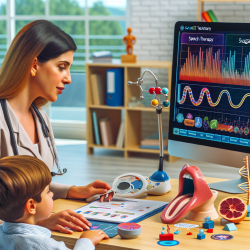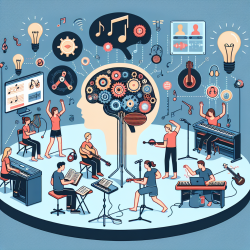Introduction to Optical Technology in Child Therapy
In the ever-evolving field of speech-language pathology, practitioners are constantly seeking innovative methods to enhance therapeutic outcomes for children. Recent advancements in optical technology, as outlined in the research article "Optical Technology Developments in Biomedicine: History, Current and Future," offer promising new avenues for improving child therapy. This blog explores how these technologies can be integrated into online therapy services, such as those provided by TinyEYE, to create data-driven, effective therapy solutions.
The Power of Biomedical Optics
Biomedical optics is a rapidly growing field that leverages light-based technologies for medical imaging and diagnostics. The primary advantage of optical technologies lies in their non-ionizing nature, affordability, portability, and high specificity in molecular and biochemical imaging. These characteristics make them particularly suitable for applications in child therapy, where safety and precision are paramount.
Key Optical Technologies
- Near-Infrared Spectroscopy (NIRS): NIRS is a non-invasive technique that measures brain activity by detecting changes in blood oxygenation. This technology can be used to monitor cognitive development in children, providing valuable insights into their learning processes.
- Optical Coherence Tomography (OCT): OCT provides high-resolution images of tissue structures, making it an excellent tool for assessing speech and language development in children. It can be used to visualize the vocal tract and other anatomical features relevant to speech production.
- Fluorescence Spectroscopy and Imaging: This technique involves using fluorescent dyes to visualize specific molecules within tissues. It can be applied to study biochemical changes in the brain, aiding in the understanding of developmental disorders.
Integrating Optical Technologies into Online Therapy
At TinyEYE, we are committed to leveraging the latest technological advancements to enhance our online therapy services for schools. By integrating optical technologies into our platform, we can offer more personalized and effective therapy sessions for children. For example, using NIRS, therapists can monitor a child's brain activity in real-time during therapy sessions, allowing for immediate adjustments to therapy strategies based on data-driven insights.
Encouraging Further Research and Implementation
The potential of optical technologies in child therapy is vast, but further research is needed to fully understand their capabilities and limitations. Practitioners are encouraged to explore these technologies and consider how they can be incorporated into their practice. By staying informed about the latest developments in biomedical optics, therapists can continue to provide the highest standard of care for children.
To read the original research paper, please follow this link: Optical Technology Developments in Biomedicine: History, Current and Future.










